The short, dark days draw in so swiftly as 2023 hastens to a close. With Christmas to break the winter gloom, cheer is welcome, but the butterfly lover mourns the loss of colour and character that butterflies bring to life. Butterflies animate our world in ways no other creatures do. Their affinity with flowers creates multiple vistas of beauty and the irresistible power to fire imagination. Added to this palette is their link with bright sunshine that draws out colour, texture and form in ways nothing can, and perfection and happiness are defined. If this is not enough, our collective anxiety for the future of our Earth fixes attention strongly on the progress of butterflies. Butterflies are short-lived, respond rapidly to change and have life cycles that require different aspects of an ecosystem, are readily recordable so their population status offer an excellent barometer for environmental conditions. The decline and disappearance of the more sensitive butterflies sounds a silent alarm, like the canary who stops singing in a coal mine.
Winter in this part of the world is synonymised with death. The shadows deepen, sunshine is rationed, light at a premium, and clear only in cloudless skies. Our ancestors knew it too. At Newgrange they shared a part of their story about light with us, leaving behind a 62-foot-long passage terminating in a chamber flooded with light at the winter solstice.
But winter light does not necessarily bring comfort. It is sharp, piercing, and slanted, described in searing perfection by Emily Dickinson in her mood poem, There’s a certain Slant of light:
There’s a certain Slant of light,
Winter Afternoons –
That oppresses, like the Heft
Of Cathedral Tunes –
In the final stanza, the poet captures the universalised fear of winter’s cold, melancholy, unwarming, spiritually destructive light:
When it comes, the Landscape listens –
Shadows – hold their breath –
When it goes, ’tis like the Distance
On the look of Death –
The road we have left to travel is made clear by Dickinson.
The bleakness of winter drives many indoors, seeking the solace of the stove and central heating. However excessive indoor living is not healthy. Fleeing from the dying of the light, my past habits involved giving up on life until warmth returned in late March. But as my mental well-being discovered, that won’t do!
How does a lover of sunshine-dependent nature survive the winter? Applying a poetic licence, it is tempting to believe that winter kills all our butterflies. And there is certainly a foundation in science for this fallacy. Some adult butterflies, like the adorable Red Admiral pictured below, flee south to escape winter but most of our butterflies die off before winter’s shadows are even cast across the landscape. A few hardy species, four in total, hunker down to out-wait winter. Three of these (Brimstone, Peacock and Comma) are invisible to us. The part-exception is the Small Tortoiseshell, because it has a habit of entering occupied houses, among other sites, to seek overwintering accommodation. Thirteen Small Tortoiseshells in two plastic boxes lined with kitchen roll are residing in my fridge after the central heating woke them up. They have settled, all are alive, and will be released next spring.
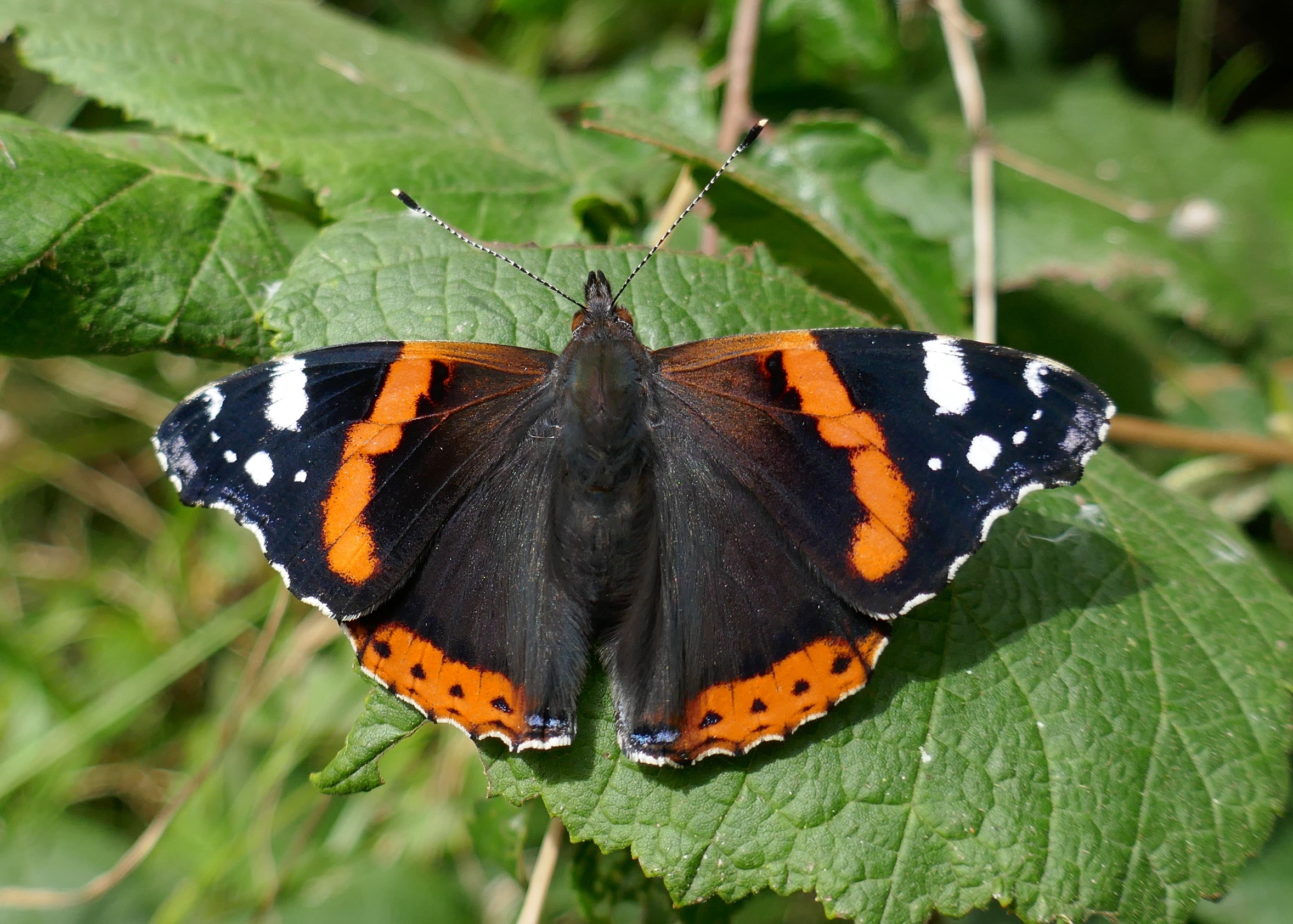
But what happens to the Small Tortoiseshell, Comma and Peacock during the winter in the wild?
All three overwinter with closed wings, choosing cool, dry, dark places to pass several months of cold weather. How well does this work?
All three have subtle underside colouring, all three usually settle in places that are dark and that allow their colours to blend with their surroundings. Not being seen in the first place is the first line of defence against the attention of hungry, insectivorous birds, especially Robins, Wrens, Blue Tits, and Great Tits. All three of these butterflies overwinter in woods and dense scrub, while Peacocks and Small Tortoiseshells will also use caves, disused buildings, and partly submerged pipes. A study conducted in Sweden (Vallin et al., 2005) compared the impact on all three species of Blue Tits. In the experiment, caged Commas, Peacocks, and Small Tortoiseshells were settled, so only the underwings were visible. The temperature was kept low to replicate winter conditions and encourage stillness in the butterflies. To have the chance to remain invisible, it is vital to remain immobile. Blue Tits were admitted to the cage for 40 minutes.
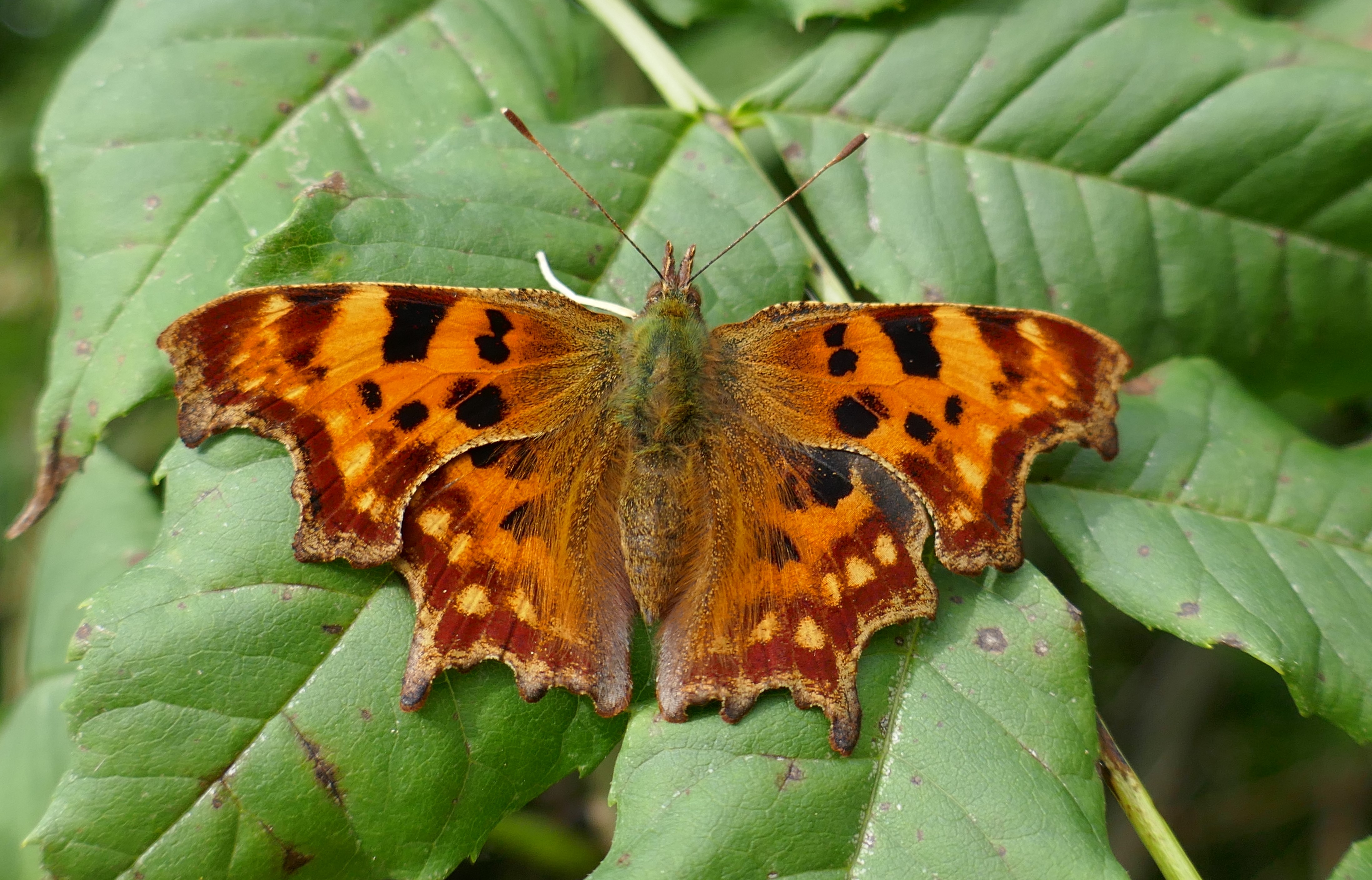
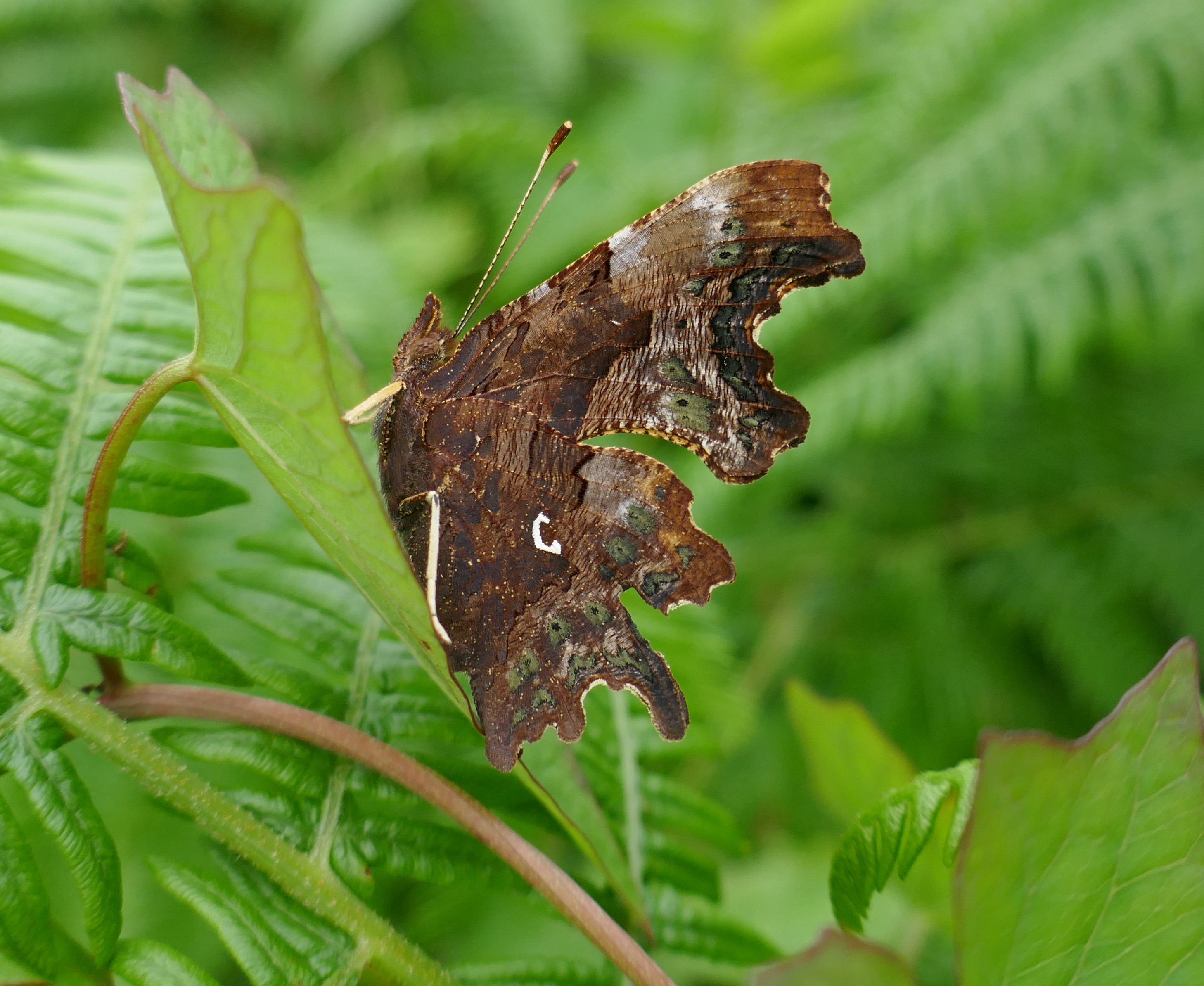
All the Peacocks and most of the Small Tortoiseshells (nine out of 15) flicked their wings open when the birds approached. The Peacock did this at a further distance from the birds than the Small Tortoiseshell. A sudden blaze of colour, the sound generated and perhaps the unexpected increase in size scared the birds. Every Peacock survived. The Peacock wing flashing, which is accompanied by a disconcerting hissing sound caused by friction generated during wing opening, caused the Blue Tits to flee. The wing flicking by discovered Small Tortoiseshells was not very effective. Overall, only 20% of Small Tortoiseshells survived, and only one discovered Small Tortoiseshell survived. In short, the Small Tortoiseshell is, it seems, heavily reliant on remaining unfound for survival. The Commas did not flick their wings open at any point, remaining still even if attacked. Overall, 67% of Commas survived.

The Peacock was the most discoverable but proved more intimidating than the Small Tortoiseshell, which was better hidden, followed by the Comma which was found least often and made no attempt to intimidate. All three are edible to birds, so none of them rely on chemical defences to deter the Blue Tits.
One might wonder why Small Tortoiseshells flick their wings open given it proved mostly unsuccessful in scaring the Blue Tits. It should be noted that the butterfly only flicked its wings open when the bird was very close, and it is likely that it ‘knew’ it had been discovered and had to fall onto a new line of defence. While wing flicking did not prove very effective in this case, it might be more effective against other birds and other predators.

Peacocks have been found overwintering together, in large groups. Given its ability to intimidate, overwintering in numbers makes sense; if a single Peacock can scare a Blue Tit, how intimidating is the combined impact of several flashing, hissing creatures?
The other Irish butterfly that passes the colder months as an adult but was not included in the study is the Brimstone. It uses different overwintering quarters to the three members of the Nymphalid family, selecting greenery to blend with its leaf-like appearance. Brimstones overwinter in clumps of ivy, under bramble leaves where bramble grows among other scrub and open woodland and probably in dense holly, yew, and Greater Tussock Sedge Carex paniculata. When a sleeping Brimstone is approached, it does not flick its wings open and remains immobile, even when handled. It likely relies, like the Comma, on being undiscovered.

What can one do to continue to enjoy butterflies in the off-season? One way is to read journals, books and new research, especially involving our native butterflies. Another way is to plan our butterfly gardens for the coming season. Another is to study butterflies that remain active during the colder months, not as adult butterflies, but in the caterpillar stage.
Rearing butterflies is a great way to do this. There is much that can be learned from rearing butterflies outdoors, in the open, to reproduce natural conditions as much as possible.
Currently, I am rearing Speckled Wood caterpillars. The caterpillars arose from eggs I obtained from two females I caught on 2 September. After laying several eggs, the butterflies were released. The eggs hatched just before mid-September, all within about two days.
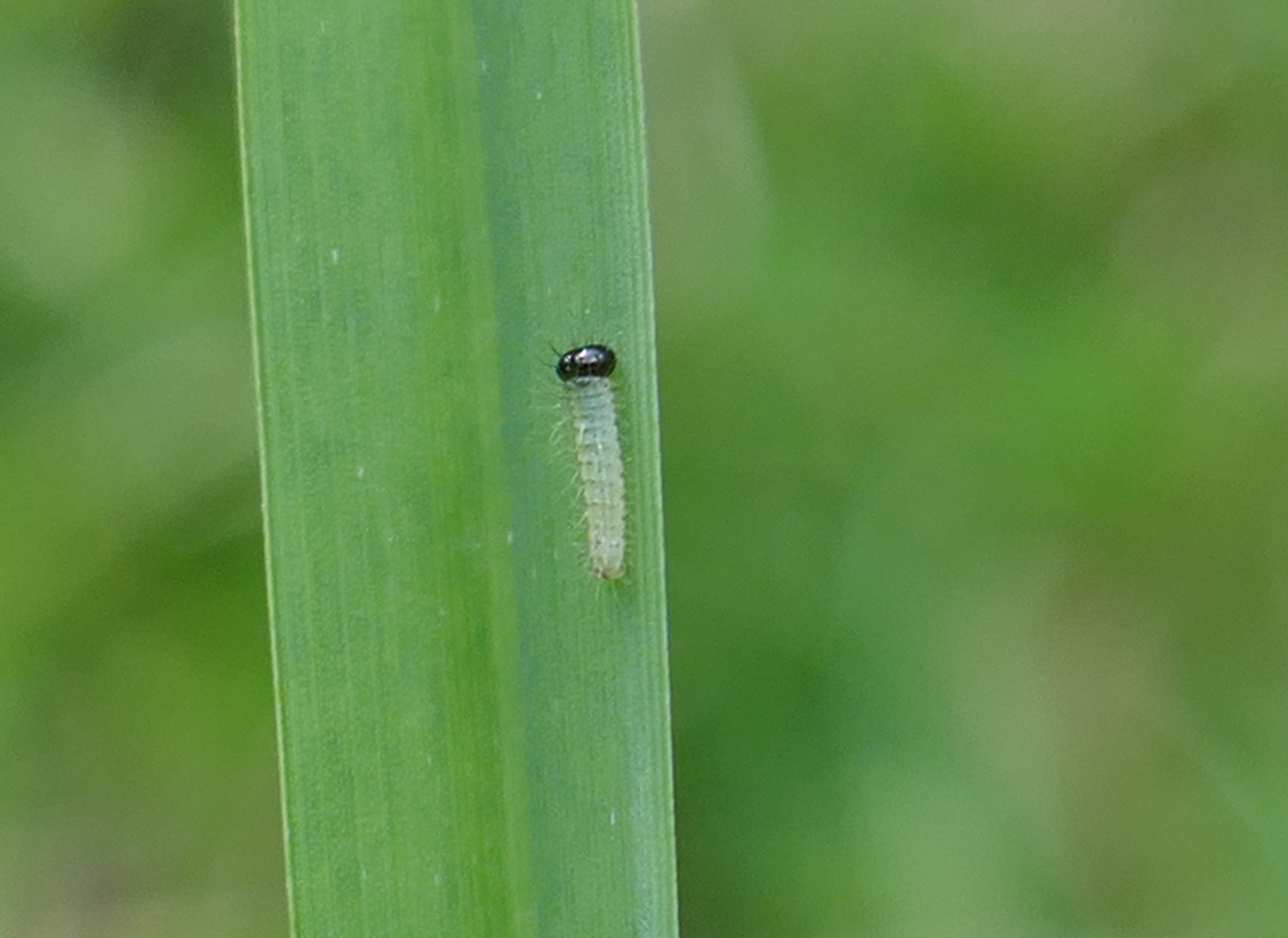
The Speckled Wood caterpillar undergoes four instars (growth stages). Each instar ends when the caterpillar sheds its skin and enters the next instar or pupates after reaching full size at the end of the final instar. My Speckled Wood caterpillars are showing different growth rates, despite arising from eggs laid at the same time, hatching at almost the same time, and feeding on the same plants. Some of the caterpillars are in the third instar, others are in the fourth instar (this is the final instar before pupation), but none of these fourth instar caterpillars are fully grown.

The Speckled Wood butterfly is unique among Irish and British butterflies in being able to overwinter as a larva or pupa (Speckled Woods I reared from eggs that hatched in late July have reached the pupa stage). However, the available research, from caterpillars observed in Britain, shows that the Speckled Wood larva can only survive the onset of cold weather in the third instar.

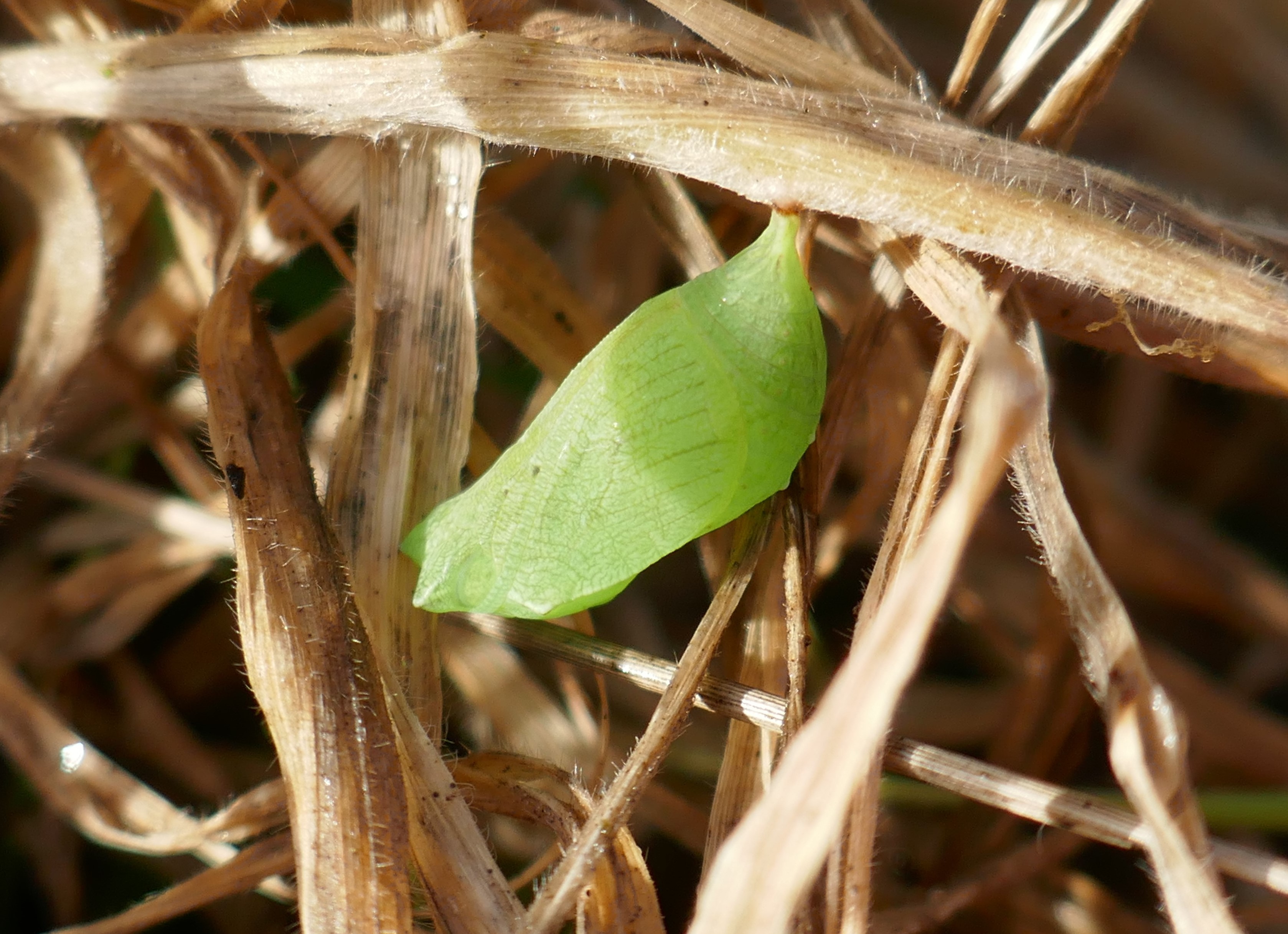
The first and second generations of the Speckled Wood fly over an extended period, resulting in eggs being laid over a long period and caterpillars at very different stages of development throughout most of the year.
If this holds for Irish Speckled Woods, my fourth instar caterpillars have a problem. Their only chance to survive is to complete their development and pupate before the cold weather strikes and feeding and digestion become impossible. They were still busy feeding today (10 December 2023), and they certainly need to continue, because these currently measure 20mm, and need to reach about 30mm before they are fully-fed. I suspect that nocturnal feeding occurs even in December, with caterpillars being found high on the foodplant beside recently nibbled grass. If these are in a race against time, they are taking full advantage of the milder nights with the night-time temperature of nine Celsius at 19:00 on 10 December.
Will they make it? How will this play out? Will I discover that the fourth instar Speckled Wood caterpillar can withstand the generally mild Irish winter? Is it more flexible than was thought? Butterflies and the natural world generally can keep us immersed year-round if we continue to engage!
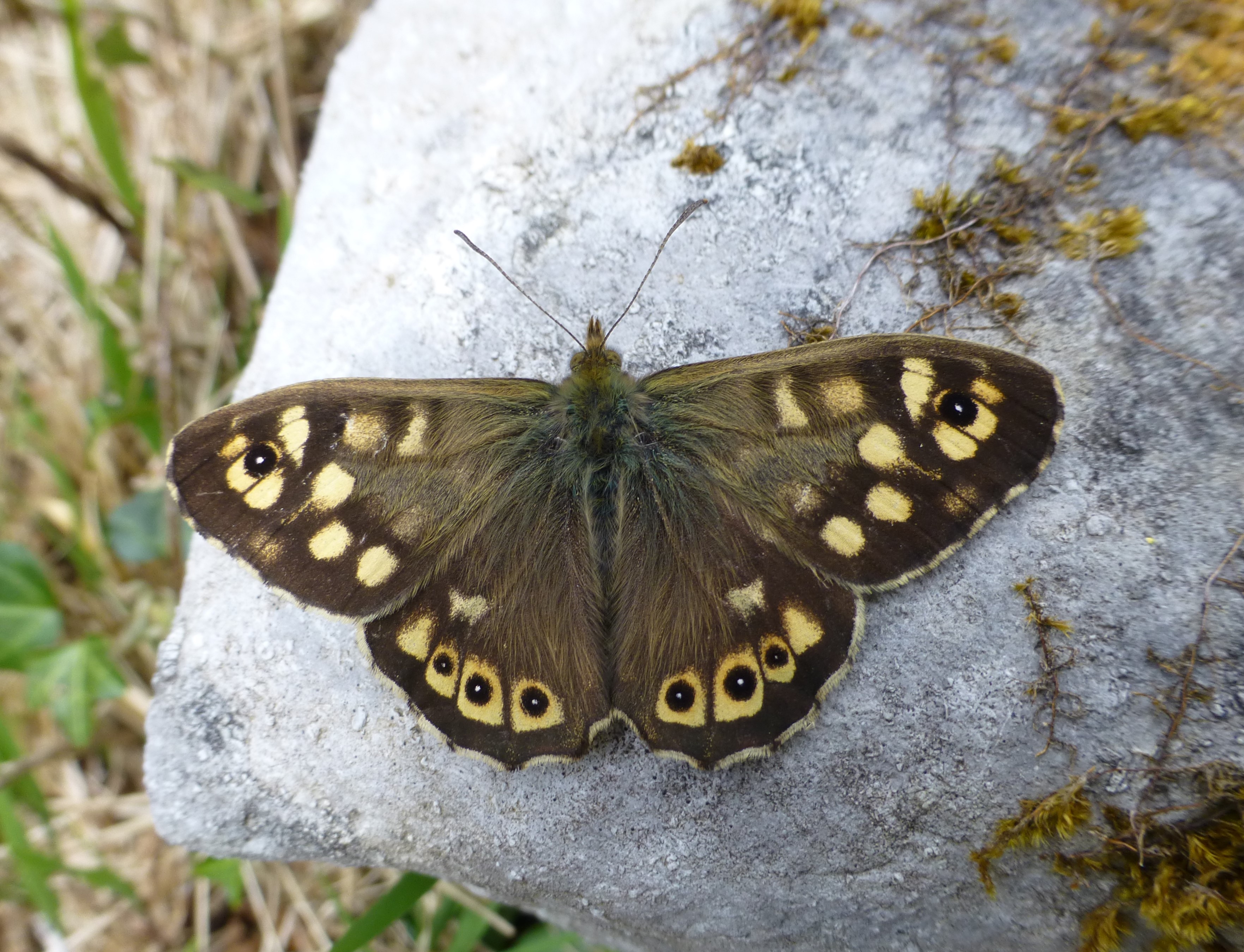
Key Reference
Vallin, A., Jakobsson, S., Lind, J. & Wiklund, C. 2006, “Crypsis versus intimidation–anti-predation defence in three closely related butterflies”, Behavioral ecology and sociobiology, vol. 59, no. 3, pp. 455-459.

